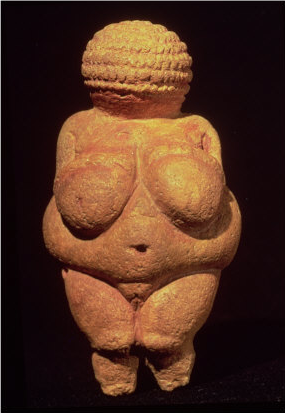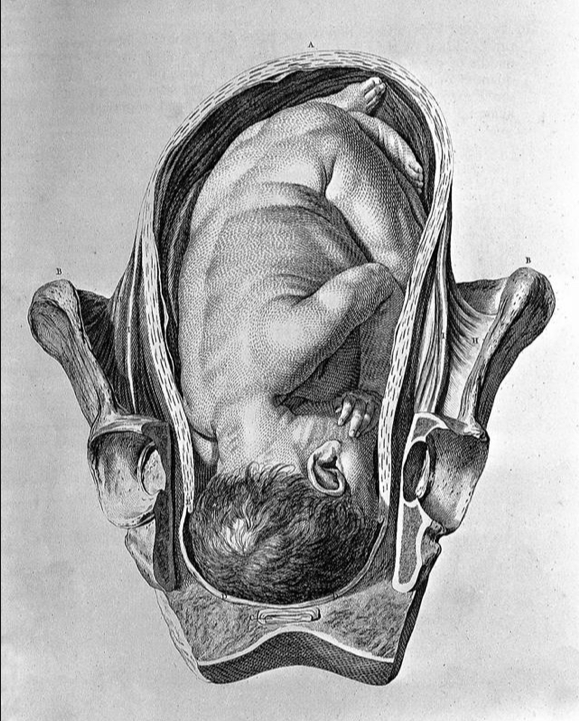« I believe that each of us can make a tremendous difference. Politicians and visionaries will not return us to the sacredness of life. THAT, will be done by ordinary people, who gather, neighbours and friends together and say :
remember to breath,
remember to feel,
remember to care,
remember life.
Let us do this together - for ourselves, and our children, and our children’s children….» Gunilla Norris
As I was listening to a guided meditation early last week I came across this powerful quote from Gunilla Norris. And it got me all fired up for the Paris Positive Birth Movement gathering that was to come later that week.
This idea that real change comes from ordinary people, coming together, from a point of shared experience is something I have always believed in, and it is the premise of Grassroots movements such as the PBM.
But this quote was about more than that, it was a gentle nudge, a subtle whisper, reminding us that the real power from these gatherings comes from when we connect on a deepy human level, when we connect from the heart.
And THAT, I believe, is a revolutionary act.
What’s revolutionary about that?
“We underestimate the strength, positive energy and healing power we cultivate when women gather all together. Because there used to be more women's gathering for all kind of purposes back in time. Unfortunately it's not the "trend" anymore. We need each other's presence, words, energy. I am so grateful to have found this group in Paris, and hope it will become an example to empower women.” Marissa, mum and hypnobirthing teacher.
There is a tremendous energy in women gathering together, sharing experiences, supporting one another, listening, hearing, respecting silence, respecting the presence and needs of others... It is the power of sitting, breathing, and feeling together in one room that makes individual concerns feel bigger, and important.
And this conscious gathering, this collective caring IS a political act. It’s about staying THIS matters, I matter, WE matter, and mostly: Our CHOICES matter.
Sometimes, that’s all it takes. This tiny little micro-revolution that can happen inside of any of us, is all that needs to happen to alter the course of someone’s life, even just a little bit.
Off the back of these gathering a woman might change her care provider, she may feel more empowered or informed to a make a different choice about a certain aspect of her birth plan, or she may simply gain confidence and conviction from listening to the positive birth experiences of other women. They may seem tiny, but these everyday minature revolutions can change one woman’s experience. And that matters.
"J'ai vécu mon premier Positive Birth Meeting comme un moment de ressource. J'ai beaucoup apprécié l'accueil et la bienveillance des femmes présentes et la qualité de nos échanges. Nous avons abordé des sujets précis concernant le déroulement de l'accouchement tout en gardant un esprit très positif de soutien, d'optimisme et d'ouverture. Je suis repartie plus sereine et confiante, avec avec des réponses pratiques et l'envie d'explorer l'hypnonaissance. Merci encore à Jodi et Sharon de leur générosité". Eléonore M. (2nd time mum, currently 27 weeks pregnant)
And what of our hearts ?
"Thank you for creating a safe and positive space to talk about pregnancy and birth, to share information, stories and give support" Ruxandra, mum & Hypnobirthing teacher
This tone of collective caring, support & empathy IS the revolution. I believe that chosing to connect with ourselves, and each other from the heart is one of the most powerful choices we can make.
It is a pivotal first step in saying « I matter, my choices matter » and consequently being able to extend that loving presence to « YOU matter, your choices matter,» which will fundamentally lift us all. Because then EVERYONE matters, and EVERYTHING matters.
Whenever I see any real momentum in the birth world, whenever women are really supporting one another in a way that leads to palpably positive change, it is these tender qualities of the heart that are always at it’s core. Birth icons such as Sheena Byron, Tracey Cooper and Francoise Freedman are shining examples of this from me, their work is so clearly charged from the heart that it infuses everything they do and eveyone they touch.
Writ large, the revolution starts with you. It starts with the simple, but revoltionary act of self care & self compassion. When we cultivate that heartspace in ourselves - that tenderness, that receptivity - then it invariably and authentically extends to others.
Can we have a birth revolution without it ? Counterbalancing the fear bias
The danger -then - is when the negative, critical, fear bias of our brains take charge and our hearts get left behind.
Too often I have seen birth gatherings, meetings or forums turn into critical, judgemental, in-fighting, which serves nothing and serves noone.
Even in this supportive, space of the Paris PBM last week there was a moment where the tone of the meeting turned to fear & anxiety. Luckily, it was Emilie, a beautifully receptive and conscious french Chirpractor that spoke up and brought everyone’s awareness to how this switch had completely changed the atmosphere « look how peoples behaviour, language & interactions has changed when we start feeling through fear….this is exactly what happens in hospitals. This fear is contageous »
Fear creates barriers, it creates resistance & contraction, infusing the exact opposite conditions to the open receptivity of the heart. The good news is, they are both equally contageous…so better to focus our attention on cultiavting the heartspace - non ???
Emilie was spot on : it is exactly what is happening in the institutionalised birth world. We forget to breath, we forget to feel, and we forget to connect. Midwives so frequently have no time or space to come back to their hearts, in the pressure cooker of the current sytem.
Crucially, Midwives too must start from a place of self care and self compassion before they can authentically extend this loving presence to others. And the current climate in which most Midwives work – gloablally – are not at all fertile for cultivating the heart. There is no space to breath, no space to feel – deeply - and less and less energy left to care.
This theme of caring for yourself is thus a wake up call and a warning call for many of us birth workers and proffessionals. Sometimes we get so charged and animated about the bigger political picture of changing things in birth that we forget this basic fundamentally micro revoltionary act : We forget to feel, forget to breath, forget to connect. We lose sight of this quality of loving presence - for ourselves and others - that has the huge capacity to impact on all and everything.
The revolution starts with you ; Cultivating the heart space
This week Paris was blessed with a visit from the positive Mumming sensation Hollie de Cruz. She was kind enough to leave me with some of her *yesmum* positive affirmation cards for mums, which I gave out during my postnatal yoga classes. These daily affirmation cards are a brilliant and simple way to remind yourself to infuse self-compassion, positivity and kindness into your busy everyday life. Thank you Hollie! I have mine out on my coffee table : )
The essence of navigating change: before, during & after birth
It is because of this conviction in the power of empathy and shared understanding that I have been focussing on cultivating heart awareness in my own practice recently, and I have been planning my prental yoga and postnatal yoga classes around this theme.
If you ask me (which you didn’t, but you’re reading my blog so I’m going to tell you anyway) this choice to reconnect with the heart is one of the most powerful choices we can make.
The qualities of self compassion and acceptance are what I believe truly support women to adapt to the everpresent emotional and physical transformations during pregnancy, birth and motherhood.
In my experience, it is meeting these changes with openness, receptivity and self compassion that allows women to make space for these potentially painful experiences.
Thus the focus of my prenatal yoga and postnatal yoga classes of late has been around the physical postures and meditations that open the chest and the heart space, reminding us to feel, and cultivate this tender receptivity of the heart. Being kind to ouselves and kind to others.
There are tonnes of meditations which you can do to cultivate this quality of self compassion and extending this gentleness to others, such as the loving kindness meditation here
The heart practice that I have been using a lot recently is this guided meditation from Tara Brach, which uses visualisation to sense our own goodness, and the tender qualities of our own hearts.
So often we judge and criticise ourselves to a point where this negativity bias becomes so deeply ingrained that it IS us. And it cannot help but extend to the way we treat others.
I’m super conscious of this at the moment since I have recently been going through the fatigue and general physical and emotional yakiness of early pregnancy. It took me a good few weeks of feeling completely grot and being quite critical and harsh on myself before I finally « woke up » and reconnected with this heart practice. Thanks GOD for my meditation practice because it really helped me to a greater acceptance and compassion for the fact that my life was changing, my body was changing and brought me back to a place of « making room for all of this». Without it I believe I would have stayed in a place of resistance and negativity for much longer, wanting to go back to the old me that I know and where I felt comfortable, instead of approaching this new phase with openess and receptivity.
The heart of the revolution
The heart is at the core of eveything we do, and if it is not, then nothing will really change, not really.
It is this subtle but revolutionly act of each of us « remembering to feel… remember to care… » first for ourselves, and then for others, that I believe will bring about real & tranformational change in women’s experience and in the birth world at large.
I hope then that sharing this quote might share this little nudge, that little whisper, that reminds all of us to come home…come back to the heart and remember to care for ourselves and care for each other.
Fear will keep pull us all down, but the heart will lift us….
More positive feedback from the PBM meetings:
"I feel so lucky to have found the Positive Birth Movement whilst I was pregnant. The discussions were enlightening and reassuring, helping me feel excited, not anxious, about birth. And as a bonus, I found out about wonderful prenatal yoga and birth preparation classes.
Since giving birth, I love attending the meetings too, to share what I've learned with other women and to keep learning and talking about one of the most amazing things in the world!!" Hollie, mum of Joyce
"A first timer to Chez Sharon, it was inspiring to see a gathering of gorgeous girls, in varying stages surrounding the creation of life. The environment was relaxed & welcoming and the chat between us flowed naturally & was throughly engaging. I would have loved to make the meetings before, but I am happy to be able to add to them post-baby and I look forward to the next one..." Ash, mum of Lir
"Great to be a part of positive birth movement. It was first time that I attended the meeting and it assured me that giving birth is the most natural thing and even it could be positive fearless journey." Lenka, 38 weeks pregnant with her first Baby
"It was wonderful to finally be able to attend this meeting! Great synergy and sharing around the theme of choice in giving birth." Tatiana, baby nurse, baby massage & prenatal yoga



















